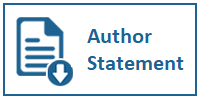Building Script of Jump Scare Scene in Indonesian Horror Box Office Film "KKN Di Desa Penari”
DOI:
https://doi.org/10.31937/ultimart.v16i2.3413Abstract
A jump scare is a technique used in horror films that aims to surprise the audience by using a sudden change of image, loud sound, or both for generating powerful simulated fear experiences in films. "KKN di Desa Penari” is a film that has been watched by over 10 million viewers in cinemas. This film contains believable real-event content-wise based on threads written on Social Media that goes viral. This study aims to investigate how "KKN di Desa Penari”'s script builds jump scare scenes in film and creates fears that are needed as a great experience for viewers. This study describes scene components in script and mise-en-scene that elevates viewers' expression on jump scare by conducting analysis from the original script and film "KKN di Desa Penari”. In conclusion, this study shows that the script for the jump scare scene in this film is not only about sudden immediate shocks and jump scares but also in terms of building a sense of fear in the script using components in scene design, which are turning points, setup/payoff, emotional dynamics, natural choice.
Keywords: jump scare; horror; film; kkn di desa penari; script.
Downloads
Downloads
Published
How to Cite
Issue
Section
License
Authors retain copyright and grant the journal right of first publication with the work simultaneously licensed under a Creative Commons Attribution-ShareAlike International License (CC-BY-SA 4.0) that allows others to share the work with an acknowledgement of the work's authorship and initial publication in this journal.
Authors are able to enter into separate, additional contractual arrangements for the non-exclusive distribution of the journal's published version of the work (e.g., post it to an institutional repository or publish it in a book), with an acknowledgement of its initial publication in this journal.
Copyright without Restrictions
The journal permits the author(s) to hold the copyright without restrictions and will hold distributing rights without limitations.
The submitted papers are assumed to contain no proprietary material unprotected by patent or patent application; responsibility for technical content and for protection of proprietary material rests solely with the author(s) and their organizations and is not the responsibility of the Ultimart: Jurnal Komunikasi Visual or its Editorial Staff. The main (first/corresponding) author is responsible for ensuring that the article has been seen and approved by all the other authors. It is the responsibility of the author to obtain all necessary copyright release permissions for the use of any copyrighted materials in the manuscript prior to the submission.















